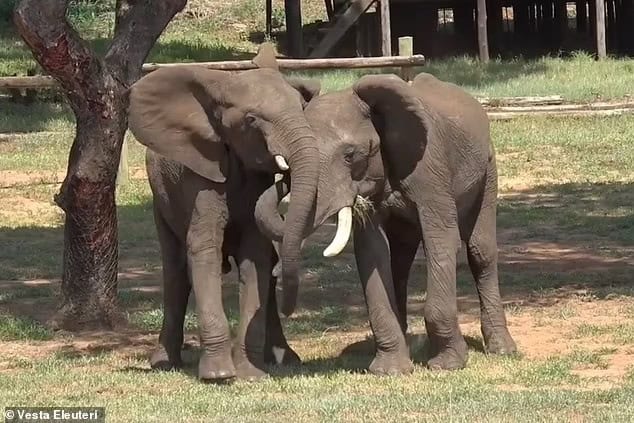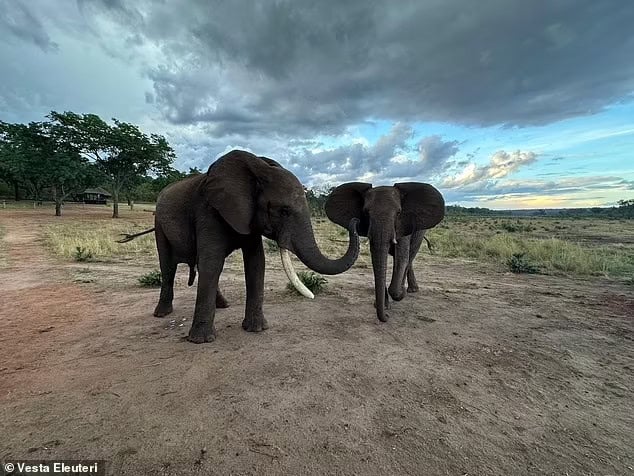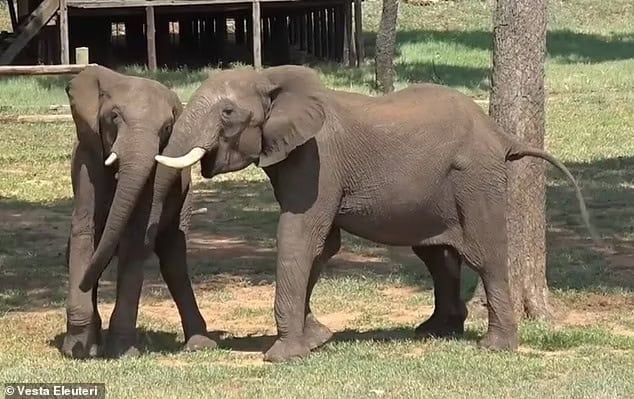Humans often greet each other with a handshake, hug, or wave, but elephants have unique ways of saying hello.
New research has uncovered how African elephants combine gestures and vocalizations to greet one another, with behaviors ranging from ear flapping and trumpeting to tail wagging and roaring.

Researchers from the University of Vienna studied 89 greeting events among a herd of semi-captive elephants in Zimbabwe.
They observed 1,282 behaviors during these interactions, finding that the most common greeting was a combination of rumbling sounds and ear flapping.

This behavior was especially prevalent among female elephants, suggesting it plays a role in strengthening social bonds.
In addition to vocalizations, the study found that elephants used gestures such as trunk swinging, approaching backward, and even secretions from a sweat gland unique to the species.
Urination and defecation were also frequently observed, suggesting smell may be a key element of elephant greetings.

The researchers noted that the type of greeting depended on whether the other elephant was watching.
When visible, elephants were more likely to use visual cues such as ear spreading or trunk-reaching.
When not being watched, they relied more on audible signals like ear flapping or physical touch, using their trunks to make contact.

It is believed that these elaborate greetings, especially between female elephants, help reinforce recognition and strengthen their social bonds.
On the other hand, male elephants may use their trunks to assess chemical information or encourage positive interactions with other males, according to a recent study.
In their paper published in Communications Biology, the researchers concluded that social relationships influence how elephants use signals during greetings.
They suggest these behaviors reinforce social ties upon reunion, similar to how other animals, like chimpanzees, combine vocalizations and gestures based on whether they are being observed.
Interestingly, the study adds to growing evidence that elephants share behavioral similarities with humans.
Previous research has found that elephants can vary their diet based on personal preferences and physical needs, such as a pregnant elephant having different cravings at various stages of her pregnancy.
This dietary flexibility may also explain why groups of elephants forage together, as individuals may seek different plants, ensuring enough food for the group.
This research further highlights the complex social dynamics of elephants and their unique methods of communication, showing just how important these interactions are in maintaining relationships within their herds.
